17th Century Silver Pomander / Watch / Medicine Box
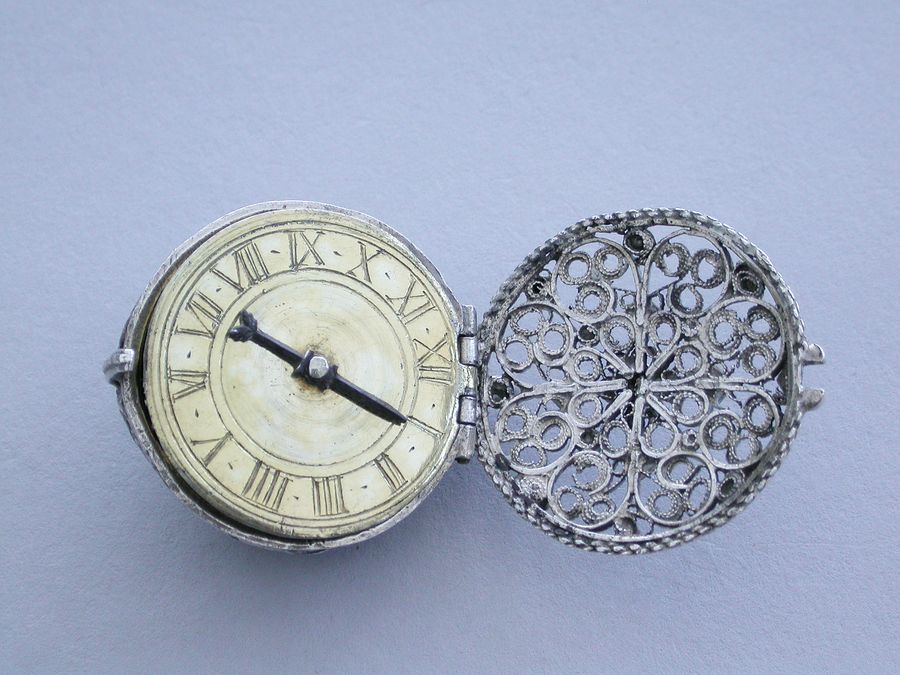
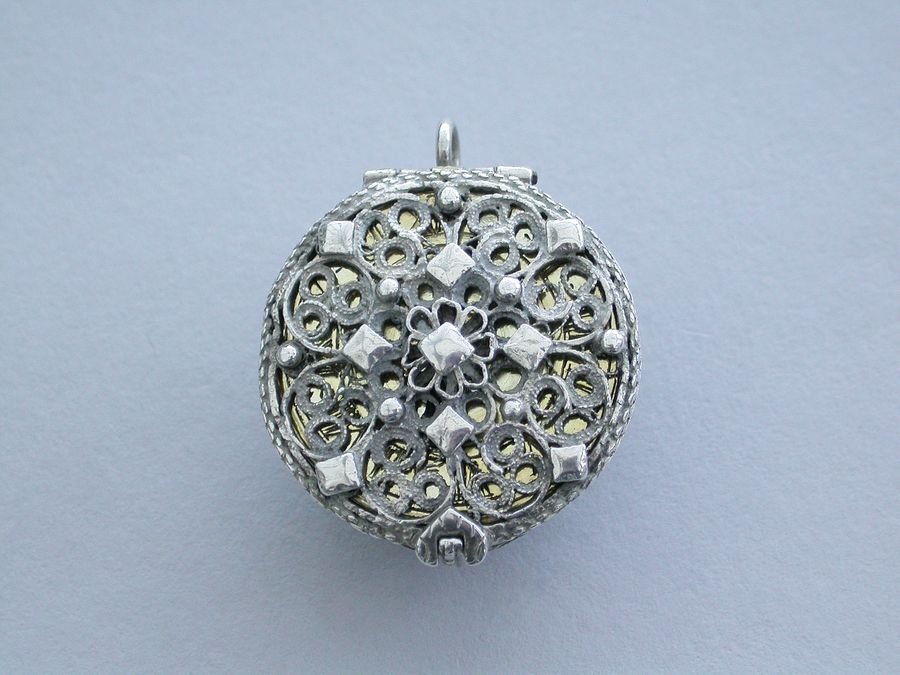

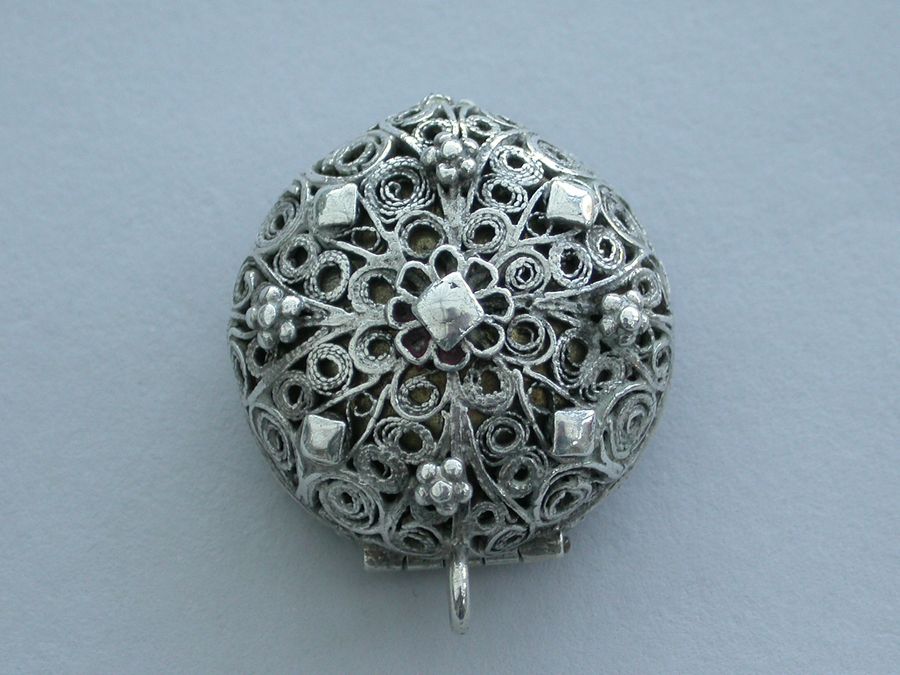
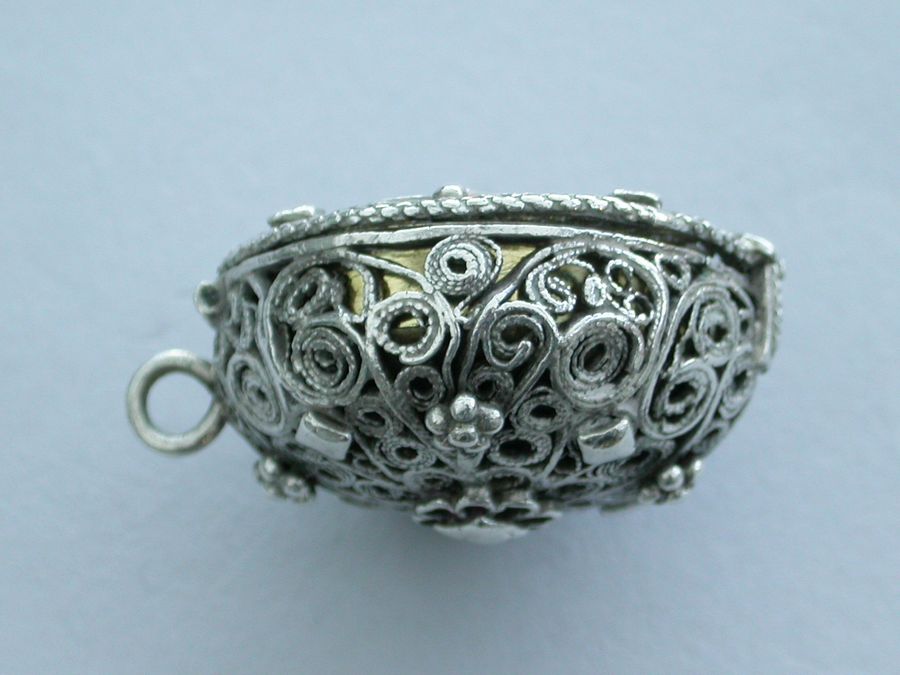


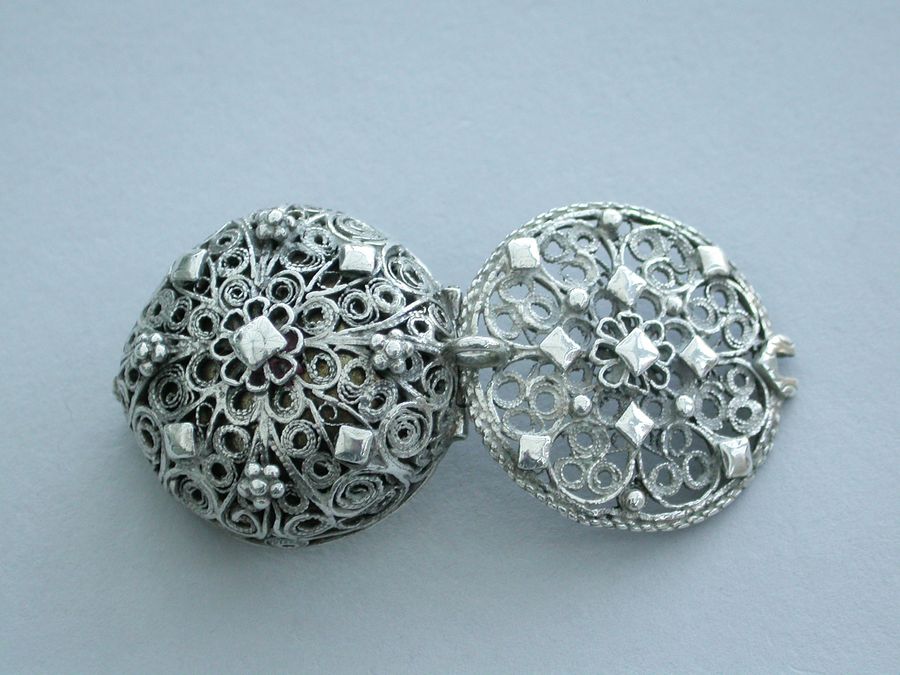
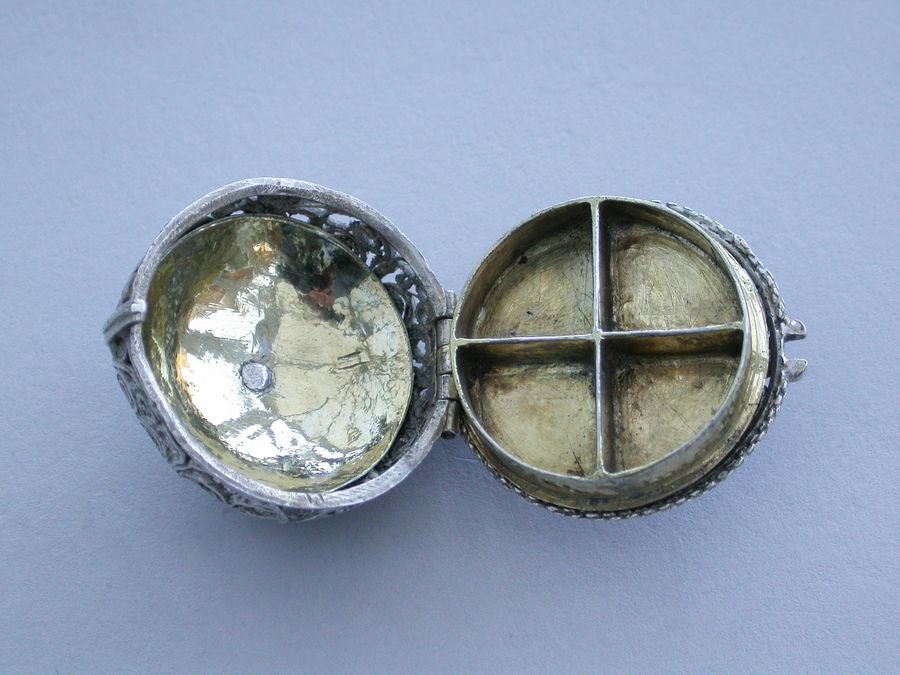
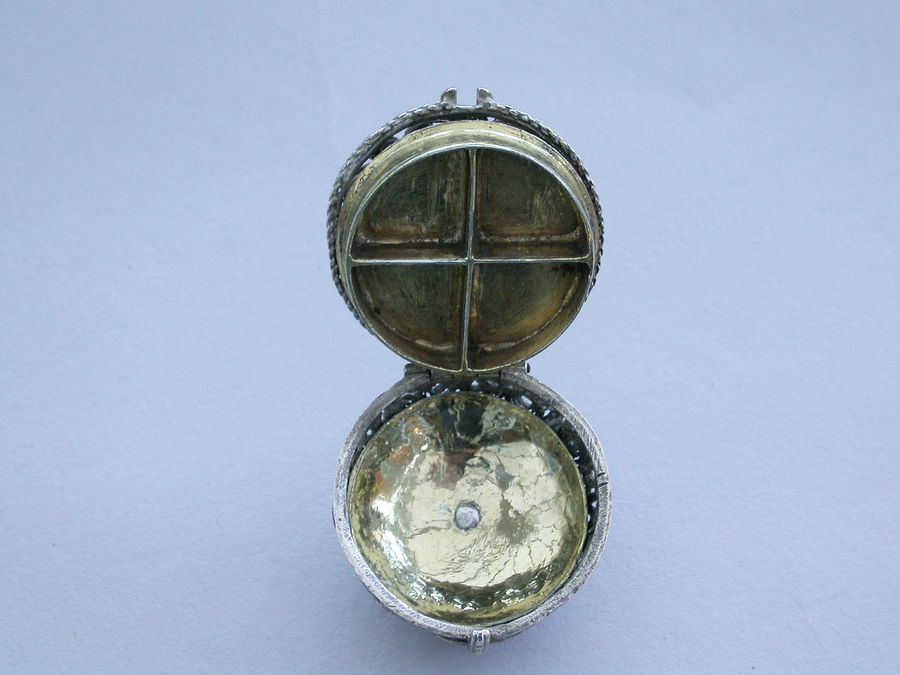
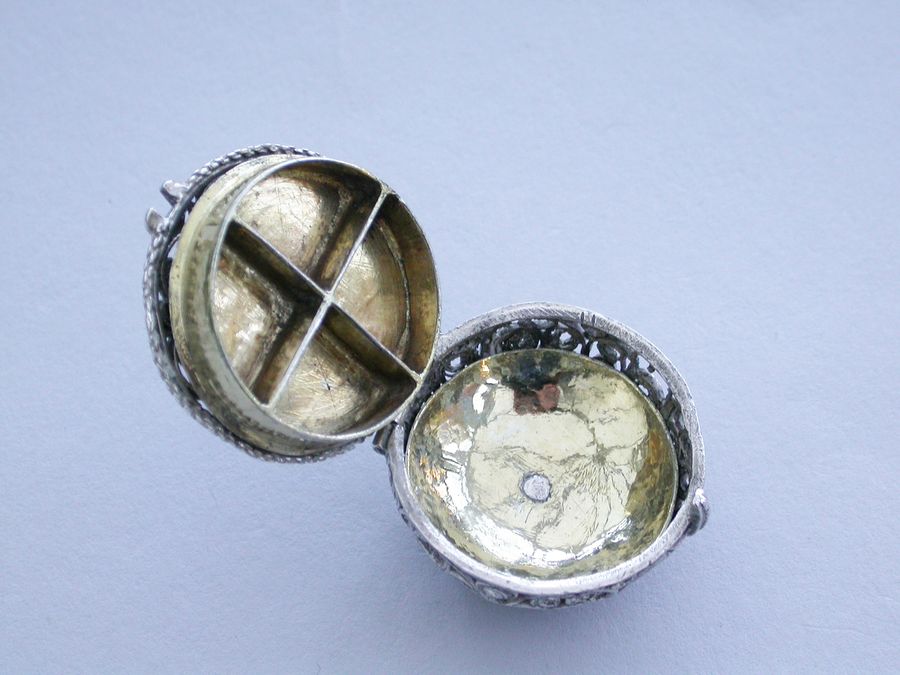
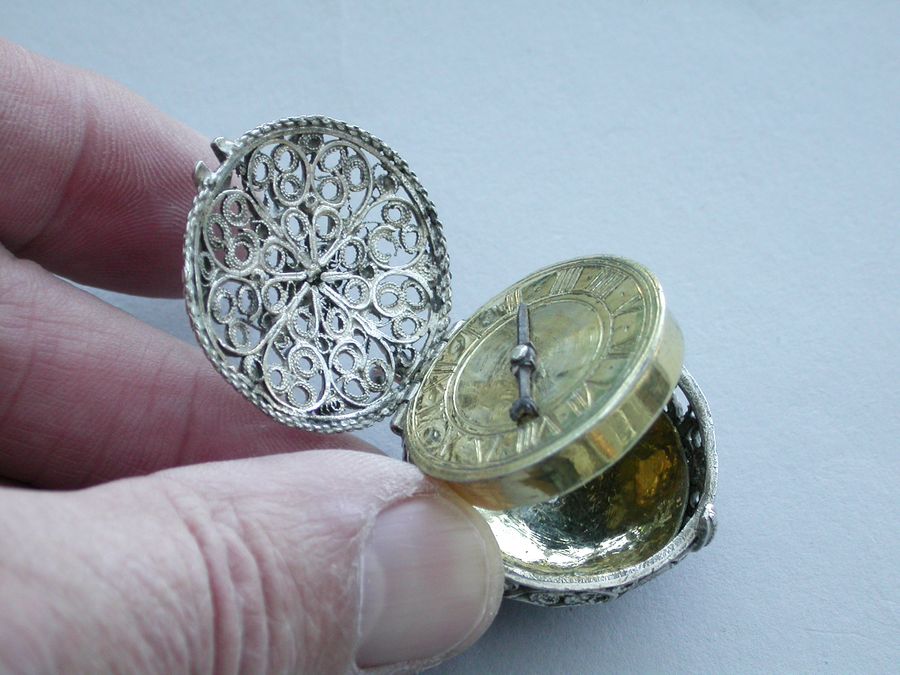

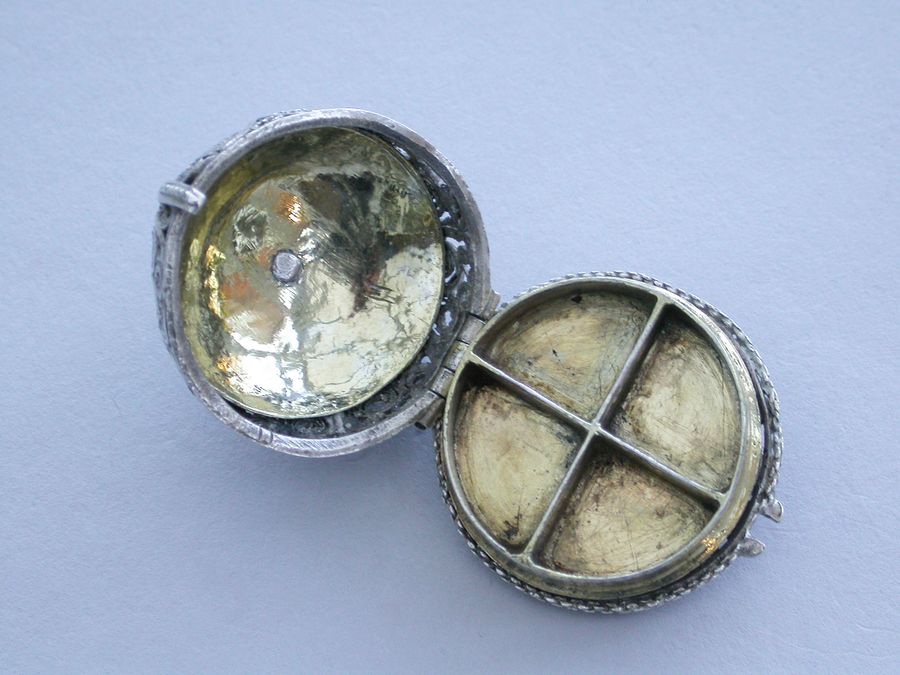

An unusual late 17th century silver filigree Pomander or Medicine Box, of locket form with five-lugged hinged lid, attached suspension ring and snap type fastener, the body with intricately pierced filigree scroll-work and raised flower-heads and diamond shaped studs, the hinged gilded interior lid formed as a watch face with engraved Roman numerals and single steel hand, the interior compartment divided into four equal sections.
Unmarked, probably English c1680.
Probably used as a Pomander, but possibly for use as a medicine box, the user would set the hand to the time of the next dosage (See: 'Silver Boxes' by Eric Delieb, page 30, plate 41).
The term pomander arose during the Middle Ages from the French pomme d’ambre and referred to an aromatic ball made of ambergris, civet, musk, dried flowers, spices and scented oils. In time, the term became interchangeable with the containers into which these scented substances were kept.
The prophylactic function of scent was very important throughout the Middles ages and the Renaissance. Inhaling the aroma of specific spices and herbs, or simply carrying them on your person as a talisman, was thought to cure or prevent serious illness.
The complexity of the pomander evolved over time to better serve the curative function of scent. As certain spices started to be associated with the treatment of specific ailments, it became more important to keep the ingredients in a pomander separate. Thus the segmented pomander was created as a portable vessel within which these precious antidotes could be kept untainted, fashioned in antiseptic silver.
Sold - £795.00



